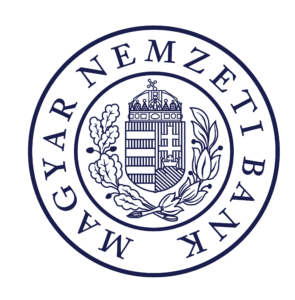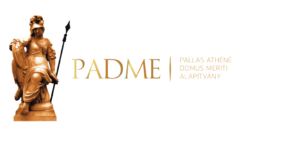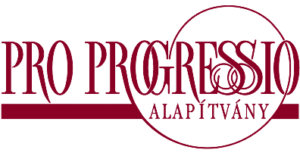Spanish artist Javier Aparicio Frago gives a detailed description of his work – from the initial concept to how it was realised in Budapest – in this essay. Javier collaborated with mathematicians Balázs Bárány, Roland Molontay and Károly Simon from the Department of Stochastics, Faculty of Natural Sciences, on the research topic The World of Fractals. He stayed at the Budapest Art Quarter and exhibited his work there together with Hungarian resident artists of last year, Olga Kocsi and Ádám Boruzs.
Introduction – An anthropological perspective
The project has focused on the connection of the world of fractals and writing systems. As the topics were selected with the objective of aesthetic experimentation, I have been more interested in delving into the visual features of the alphabets rather than their meanings. This creative process was also preceded by extensive research into a series of artworks that address the underuse or endangerment of writing systems as a way to highlight the planet’s cultural diversity in the face of a predominant global culture. (As a case study, in 2017, the president of Kazakhstan announced that the country would adopt the Latin alphabet “with the goal of completing the transition by 2025. (…) It is expected that all official publications, educational systems and public documents will adopt the Latin alphabet in the coming years”. (Peleschuk, 2017). Like other countries in the area, Turkmenistan officially adopted the Latin alphabet in 1993, Azerbaijan completed its transition in 2001, Uzbekistan began the process in 1993, although the use of the Latin alphabet is still not fully implemented, and Cyrillic is still widely used. In East Asia, “the Vietnamese language began to adopt the Latin alphabet due to Portuguese and French missionaries, completing the transition in the 20th century)”. (De Francis, 1977). Similar circumstances occurred in the Philippines during Spanish and American colonization. Despite the attacks, various writing systems can still be found, for example, in the Buhid script1, [Images 1, 2] the motif selected for the project.

The creative process
Although my participation in the residency program lasted a month, there were processes that had been completed before my arrival in Budapest, since the beginning of the discussion period with the mentors. Once the topic was identified, the techniques were needed to be specified. Approaching ‘The World of Fractals’ from an artistic perspective can involve a handmade process as well as opportunities to experiment with digital technologies. Concerning to the planning of the project’s end result, my motivation was not limited to creating a visual piece, instead generate an environment in which ‘The World of Fractals’ could be signified both from the image and with the sound. I was also interested in desgining for a certain level of participation and interaction, rather than just a display to be observed, so the installation format was closer to my expectations. A host of possibilities was contemplated and documented in a sketchbook with descriptions, illustrations and technical diagrams, considering that the proposal should fit into the time availability development and production. [Images 3-5]

After sharing the first updates with the mentors, I used the software Resolume3 to generate modifications from the original Buhid script, at the suggestion of Prof. Dr. Balázs Bárány, so as to provoke different levels of iteration4 and recursivity5. Since the repetition allowed to generate variations from the initial piece, the result was produced by an appearance of tree-dimensionality. [Image 6, 7]. On the other hand –as the images are instant captures of a video-animation – the modified copies of the first motif were not perceivable in the moving image because the iteration was not applied to the time factor6. To introduce more complexity in the repetitions of the original item, I applied different attributes to various layers, with video animations playing at different times and modifying colors and other visual features, for instance. [Images 8, 9, 10]. Another process involved applying a delay to the iterations and combining this effect with different layer properties. [Images 11, 12, 13, 14].




Elements, Composition and Materialisation
In the project, it was not only the fractal inspiration that received focus in the writing systems motifs but also human figures. One of the features incorporated into the geometric and abstract elements was the dialogue of human body with the iterated forms. For these human motifs, pictures of anonymous people were used to create a series of paintings with traditional techniques such as ink on paper to generate characters that will be part of the final artwork. [Images 15, 16, 17, 18] In these sketches, there are different intentions. First of all, the anatomy of the body is represented by shapes that remind us of writing systems, calligraphic aesthetics and geometric strokes. In the next stage, the human figure will incorporate movement.8 The figures will be modified with parameters similar to the iterated writing systems, to create sequences with a combination of all these elements. [Image 19]. The creation of visual artworks with the integration of both modifications from human figures and writing systems motifs produced different results. [Figures 20-27]



The main work of art created during my participation in the residency program was based on a personal interpretation of the «Collage Theorem» as a reference provided by my supervisor, Prof. Dr. Balázs Bárány. The «Collage Theorem» is a key concept in the study of fractals especially in the context of Iterated Function Systems (IFS) – “a method of constructing fractals, where the resulting fractals are often self-similar,” (Zobrist & Sabharwal, 1992) and which provides a way to create a fractal that looks like a given image or shape. It essentially tells us how to find a set of simple transformations (like scaling, rotating, and translating) when applied repeatedly, and it will produce a fractal that closely resembles the target image. [Image 29]. The artwork is based on the shape of the letter «A» in Buhid Script, and itis represented by 12 frames using screens, in which every screen will include iterations of the script and integration of representation of the human body.11

The initial plan for creating an IFS is based on the shape of the letter «A» from the Buhid Script, involving a 17-screen video display, but ultimately, only 12 screens were used in total. [Image 30]. In this setup, each screen displays a sequence incorporating various elements referred to the fractal geometric modification of the script, in addition to different representations of human figures. Each video contains different «stages» where the alphabetic motifs and human representation are depicted and modified at different levels of complexity. These «stages» are defined by the following labels. [Table 1]

As the multi-screen display started working, all the video loops are playing simultaneously and all the stages are running by the following sequence. [Figure 1]. But not all the screens start at the same time, following a «canon scaled» playback, the outcome was a combination of different stages referred to as «sceneries». [Figure 2] Except for «Scenery V», all the screens are playing the main stage «Seq», while the first motif letter “A” is frozen to mark the idea of the Collage Theorem and the connection between the content of the screens and the full installation. [Figure 3]



Exhibition
In addition to the multi-screen installation, the exhibition included two other elements: a selection of original sketches from the series of human figure paintings and a projection featuring a mix of sequences related to the materials in the multi-screen display, with a synchronized soundscape12. At the opening, it was possible to watch a recorded video. At an event called Open House, I installed the devices to let the audience play and listen to the installation in the studio, too.



Notes
[1] In the classification of writing systems, Buhid script is considered an abugida, a type of writing system —sometimes known as alphasyllabary or pseudo-alphabet—in which consonant/vowel sequences are written as units; each unit is based on a consonant letter, and vowel notation is secondary, like a diacritical mark. As a Brahmic script it is still used today by the Mangyans, found mainly on island of Mindoro, to write their language, Buhid.
[2] Buhid script is available in Unicode “a text encoding designed to support the use of text written in all of the world’s major writing systems used in various ordinary, literary, academic, and technical contexts”. (Jenkins, 2021).
[3] Software that allows to synchronization of real-time audio and video animations.
[4] „Iteration is the repetition of a process in order to generate a (possibly unbounded) sequence of outcomes. Each repetition of the process is a single iteration, and the outcome of each iteration is then the starting point of the next iteration. In mathematics and computer science, iteration (along with the related technique of recursion) is a standard element of algorithms.” (Cormen et al, 2001).
[5] “Recursion occurs when the definition of a concept or process depends on a simpler or previous version of itself.” (Causey, 1994).
[6] Playlist of video updates of the creative process. https://bit.ly/3RlqI6y
[7] BuhidScriptN1A1280.mp4 https://youtu.be/k54g3S2i3Jg
[8] Here different techniques were used: Frame by frame (using different positions from the same model) and artificial intelligence software.
[9] The appearance of movement using a prompt is available here: https://youtu.be/bJGghvWicQ8
[10] The animation using the tool “Text/Image to Video” from Runway.
[11] The initial idea was to create the circuit from scratch by purchasing the components separately—screens, microcontrollers, and cables—but ultimately, the solution adopted was to use tablets.
[12] This integration between image and sound can be played real time using a midi controller. The audio modification is possible through mapping the knobs in the microcontroller and modifying audio properties in Ableton Live.
References
Ager, S. (2023) Buhid language and alphabet. Omniglot – The Encyclopedia of Writing Systems and Languages. https://www.omniglot.com/writing/buhid.htm. Retrieved on: 13 April 2023.
Barnsley, M. F. (1988). Fractals everywhere. Morgan Kaufmann.
Causey, R. L. (1994). Logic, sets, and recursion. Jones & Bartlett Publishers.
Cormen, T. H., Leiserson, C. E., Rivest, R. L., & Stein, C. (2001). Introduction to Algorithms. MIT Press.
De Francis, J. (1977). Colonialism and Language Policy in Viet Nam. Mouton de Gruyter.
Jenkins, J. H. (2021). Unicode Standard Annex #45: U-source Ideographs. Unicode Consortium.
López, V. B. (1977) The Mangyans of Mindoro: An Ethnohistory. University of the Philippinea Press
Peleschuk, D. (2017). Kazakhstan’s Transition to the Latin Alphabet. The World, 8 November https://theworld.org/stories/2017/11/08/kazakhstans-switch-cyrillic-latin-about-more-just-alphabets
Zobrist, G. W & Sabharwal, C. L. (1992). Progress in Computer Graphics: Volume 1. Intellect Books.
Javier Aparicio Frago
cover photo: Bálint Palkó


